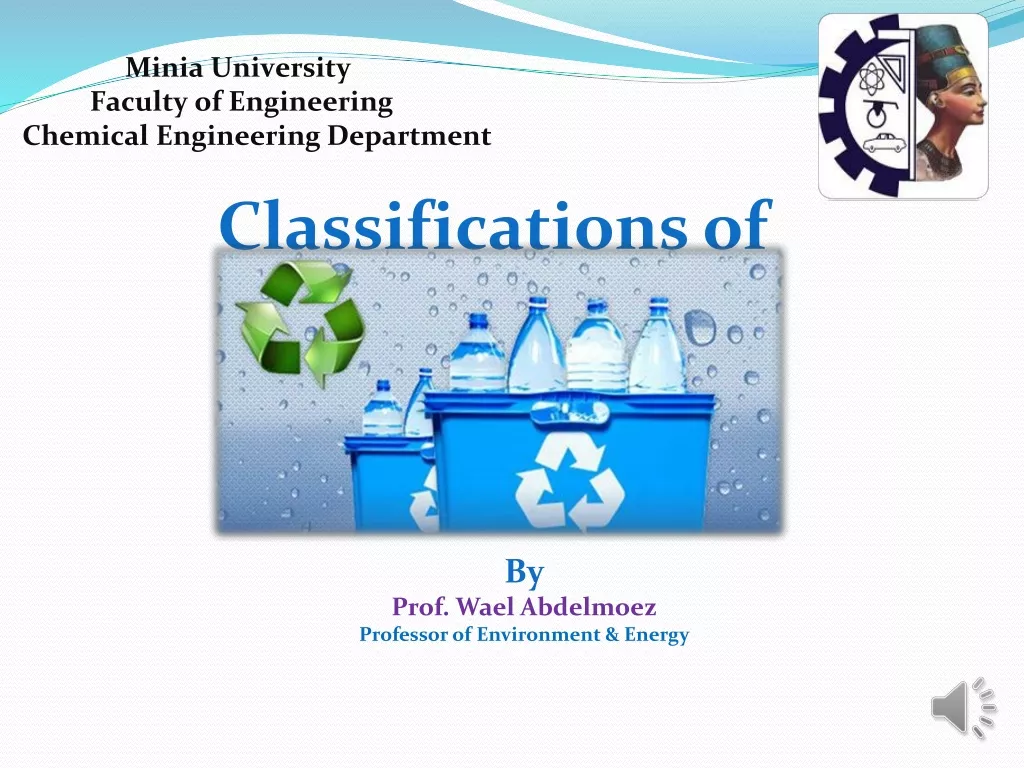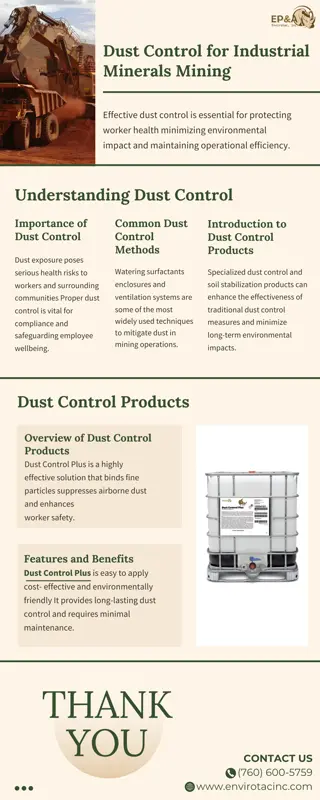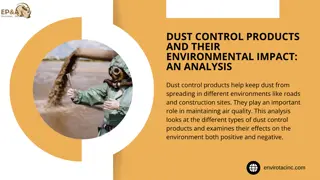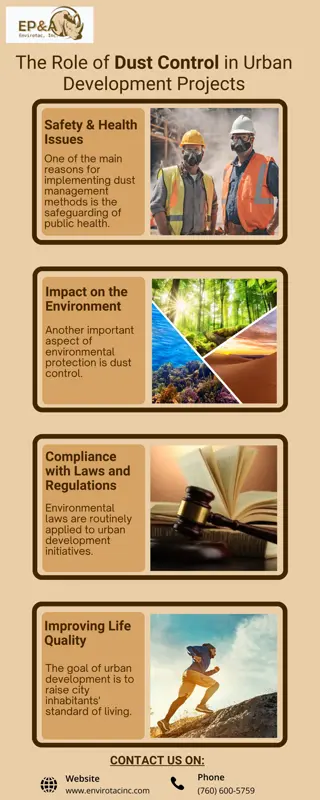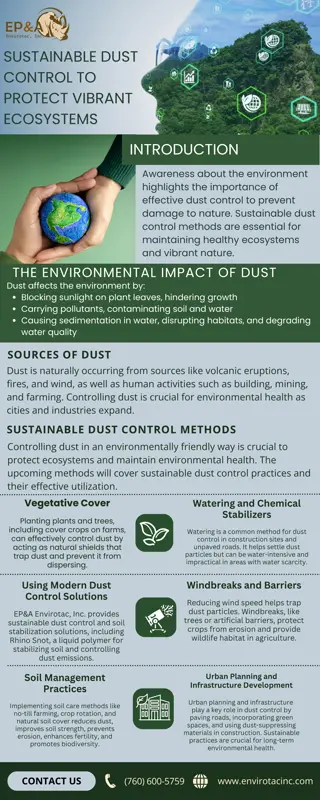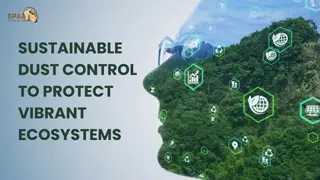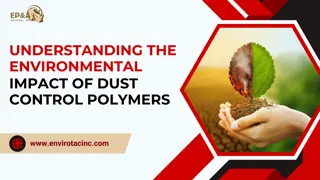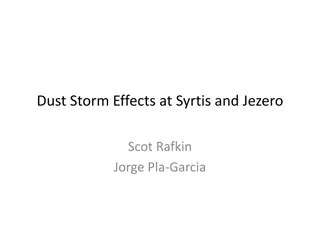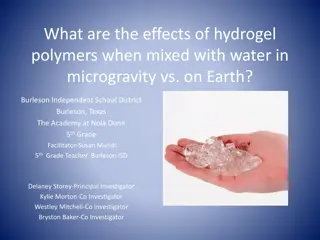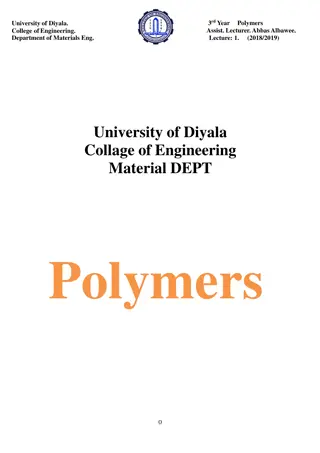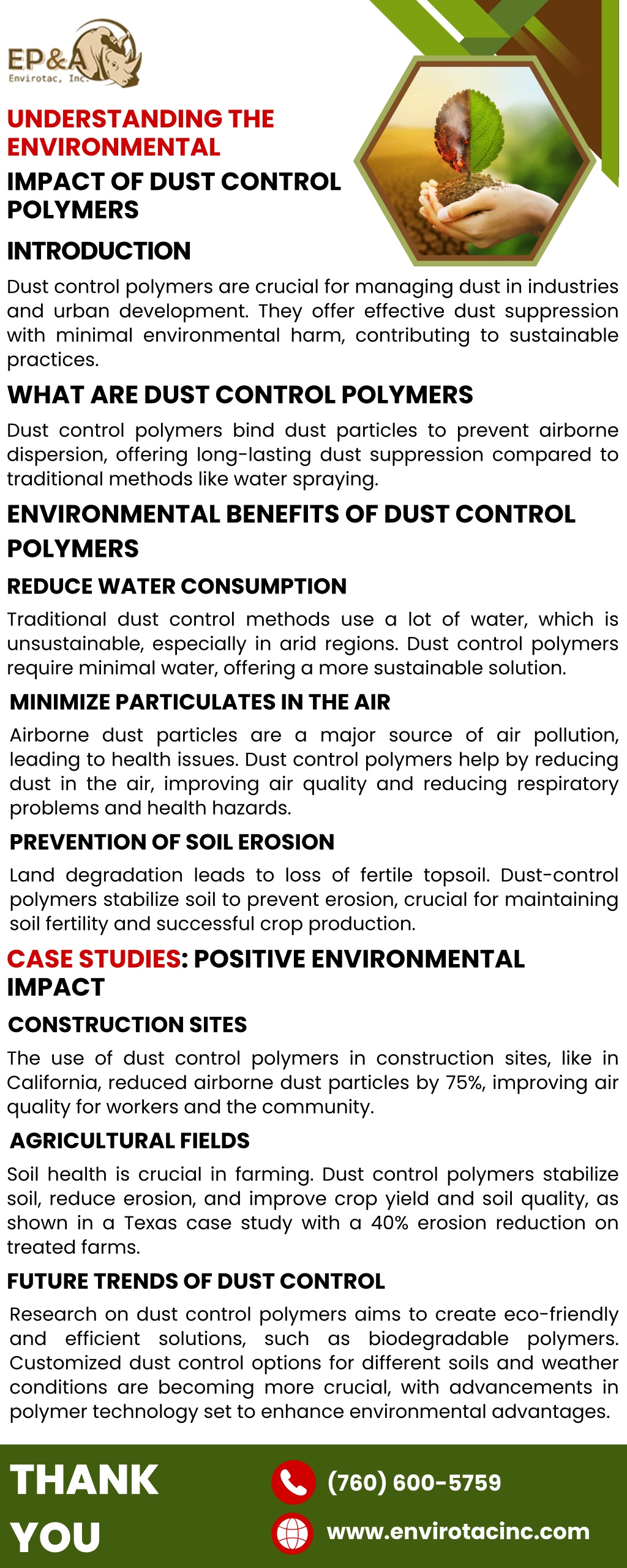
Understanding the Environmental Impact of Dust Control Polymers
Dust control polymers bind dust particles, reducing air pollution and water use while preventing soil erosion, offering an eco-friendly solution for various industries.n
Download Presentation

Please find below an Image/Link to download the presentation.
The content on the website is provided AS IS for your information and personal use only. It may not be sold, licensed, or shared on other websites without obtaining consent from the author. Download presentation by click this link. If you encounter any issues during the download, it is possible that the publisher has removed the file from their server.
E N D
Presentation Transcript
UNDERSTANDING THE ENVIRONMENTAL IMPACT OF DUST CONTROL POLYMERS INTRODUCTION Dust control polymers are crucial for managing dust in industries and urban development. They offer effective dust suppression with minimal environmental harm, contributing to sustainable practices. WHAT ARE DUST CONTROL POLYMERS Dust control polymers bind dust particles to prevent airborne dispersion, offering long-lasting dust suppression compared to traditional methods like water spraying. ENVIRONMENTAL BENEFITS OF DUST CONTROL POLYMERS REDUCE WATER CONSUMPTION Traditional dust control methods use a lot of water, which is unsustainable, especially in arid regions. Dust control polymers require minimal water, offering a more sustainable solution. MINIMIZE PARTICULATES IN THE AIR Airborne dust particles are a major source of air pollution, leading to health issues. Dust control polymers help by reducing dust in the air, improving air quality and reducing respiratory problems and health hazards. PREVENTION OF SOIL EROSION Land degradation leads to loss of fertile topsoil. Dust-control polymers stabilize soil to prevent erosion, crucial for maintaining soil fertility and successful crop production. CASE STUDIES: POSITIVE ENVIRONMENTAL IMPACT CONSTRUCTION SITES The use of dust control polymers in construction sites, like in California, reduced airborne dust particles by 75%, improving air quality for workers and the community. AGRICULTURAL FIELDS Soil health is crucial in farming. Dust control polymers stabilize soil, reduce erosion, and improve crop yield and soil quality, as shown in a Texas case study with a 40% erosion reduction on treated farms. FUTURE TRENDS OF DUST CONTROL Research on dust control polymers aims to create eco-friendly and efficient solutions, such as biodegradable polymers. Customized dust control options for different soils and weather conditions are becoming more crucial, with advancements in polymer technology set to enhance environmental advantages. THANK YOU (760) 600-5759 www.envirotacinc.com


